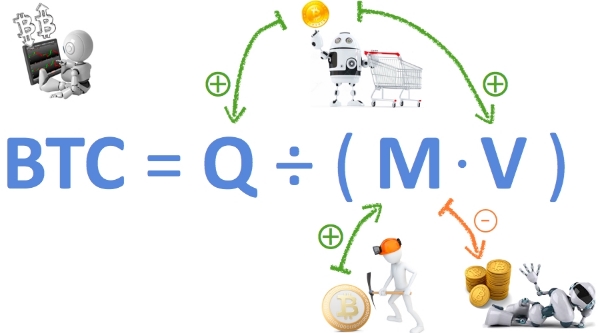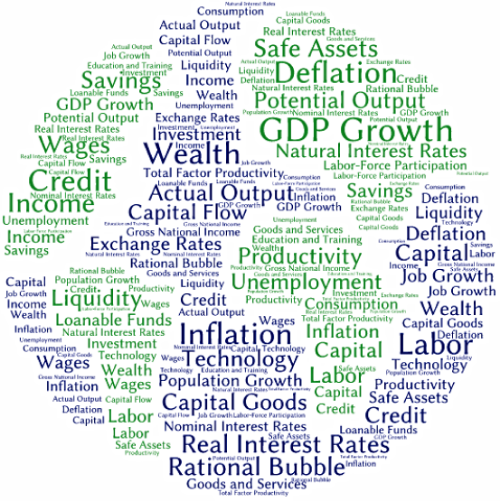The global capital market 40 years ago was a very different place. Even though in 1971 Nixon had just suspended the dollar's convertibility into gold, substantial measure of direct control over private capital movements, considered “a permanent feature of the post-war system” by John Maynard Keynes, remained in place. Since the time of Bretton Woods, when capital sums did flow across national borders, they would go from government to government, like the payments under foreign aid such as the Marshall Plan. Even tourists could be prevented from going abroad with more than a pocketful of currency if governments felt unable to make their currencies convertible.
The trend after Bretton Woods was for free trade to be revived in the post-war years but for capital controls to be tightened rather than loosened over time. For example, the Interest Equalization Act enacted by the U.S. in 1963 was designed to discourage Americans from investing in foreign securities by adding a tax that can be up to 15% of their purchase price. Unanchoring of dollar from gold in 1971 paved the way for other important changes to come. Following the Arab oil embargo of 1973, U.S. abandoned its capital controls in 1974. This was followed by UK in 1979. Within a short time, most other major economies lifted their capital controls as well. Governments around the world came to the realization that: if capital were to flow freely across borders, countries must choose between fixing their currencies and controlling their domestic monetary conditions; they cannot have both. Since the dollar was no longer tied to gold, the choice then became obvious: currencies were allowed to float relative to the dollar for the first time, driven by market forces rather than pegged to the dollar that was no longer anchored in gold.
Evolution of International Monetary Systems: (1) Gold Standard, (2) Bretton Woods, (3) Post Bretton Woods.
"Trilemma": A tough juggling act for central bankers on a tight rope.
According to what the economists describe as the trilemma, countries cannot have fixed exchange rates, free capital movements and independent monetary policy all at the same time. Under the gold standard, exchange rates were fixed and capital could move around but central banks were forced to adjust interest rates to ensure they did not run out of reserves. This could lead to deflationary pressure on the real economy, and cycles of booms and busts. Under the Bretton Woods system, fixed exchange rates with occasional adjustments were allowed; monetary policies can be independent of liquidity needs as capital mobility was highly restricted. When that system broke down in the 1970’s, the world moved to largely floating exchange rates. Capital flowed freely around the world but the result has been fairly regular financial crises.
In fact, the last financial crisis has been so huge that one is tempted to reconsider the bargain. Moreover, no one seems to be particularly happy with today's international monetary system — the set of rules, norms and institutions that govern the world's currencies and the flow of capital across borders. According to The Economist, there are three broad complaints: (1) dominance of the dollar as a reserve currency and exposure to U.S. domestic monetary policy; (2) accumulation of vast foreign exchange reserves weighing down long-term interest rates; and last but not least (3) scale and volatility of capital flows, especially the "hot money" variety, and their destabilizing effects on national economies.
This brings us to the present day global currency regime, dubbed Bretton Woods II in 2003 by a trio of economists, Dooley, Folkerts-Landau and Garber (all now at Duetsche Bank). They realized that the dynamics of today’s international monetary system is best understood as comprising a core with the U.S. as its center and a managed exchange rate periphery in Asia. Their influential 2003 paper argued that the normal evolution of the international monetary system involves the emergence of a periphery for which the development strategy is export-led growth supported by undervalued exchange rates, capital controls and official capital outflows in the form of accumulation of reserve asset claims on the center country. The success of this strategy in fostering economic growth allows the periphery to graduate to the center. Financial liberalization and open capital markets, in turn, require floating exchange rates among the center countries.
Structure of a revived Bretton Woods system comprising a US-Europe-Japan core and an emerging markets periphery.
In the 1950’s, under the Bretton Woods system, the U.S. was the center region, while Europe and Japan, whose capital had been destroyed by the war, constituted the emerging periphery. Once their capital stock rebuilt and institutions restored, the periphery graduated to the center in the 1970’s as they shifted towards free markets, floated their currencies, and lifted capital controls. With the discrediting of the socialist model in the 1980’s among the developing countries, and then the collapse of communism around 1989-1991, a new periphery began to form around the US-Europe-Japan center. These periphery countries, e.g., BRICs and other emerging markets in Asia, discovered that their cumulated capital stock was inefficient as they opened their economies to trade, and were willing to accommodate foreign capital as they pursued an export-led development strategy. Accordingly, the economic success of this group of countries in the last decade brought the structure of the international monetary system full circle to its essential Bretton Woods era form. It seems that the system has not fundamentally changed, according to Dooley, Folkerts-Landau and Garber, “it just occasionally reloads a periphery.”
The Bretton Woods system had served its purpose well while it lasted. But we're not out of the woods, yet. So it is perhaps time again to seriously think about a new architectural vision for our international monetary system; this time with a new understanding of the effects of the periphery on the center. A good starting point may be to ask fundamental questions that probe the trilemma of today’s international economics revolving around: (1) monetary policies, (2) capital mobility, and (3) exchange rates. For instance: Are symbiotic imbalances between the core and the periphery a necessary feature of global economic growth? How might one facilitate the reallocation of capital among nation states? Is there a better way to organize the world’s currencies? Most importantly, we like to understand the pivotal role of a financial intermediary that a center country such as the U.S. can play in the system. What do you think?
References:
- Rueff, Jacques and Hirsch, Fred (1965, June). The Role and Rule of Gold: An Argument. Princeton Essays in International Finance, no. 47, Princeton University International Finance Section.
- Dooley, Michael and Folkerts-Landau, David and Garber, Peter (2003, September). An Essay on the Revived Bretton Woods System. NBER Working Paper 9971. Retrieved from: http://www.nber.org/papers/w9971.pdf
- Eichengreen, Barry (2004, May). Global Imbalances and the Lessons of Bretton Woods. NBER Working Paper 10497. Retrieved from: http://www.nber.org/papers/w10497.pdf
- Dooley, Michael and Folkerts-Landau, David and Garber, Peter (2008, March 12). Asia, Interest Rates, and the Dollar (2nd Edition). Deustsche Bank Research. Retrieved from: http://people.ucsc.edu/~mpd/Asia_Interest_rates_and_the_dollar.pdf
- Dooley, Michael and Folkerts-Landau, David and Garber, Peter (2014, August 29). The Revived Bretton Woods System’s First Decade. Deustsche Bank Special Report. Retrieved from: http://www.fullertreacymoney.com/system/data/files/PDFs/2014/August/27th/DB_SpecialReport_2014-08-26_0900b8c088aa314a.pdf
- Geruguson, Niall (2008). The Ascent of Money: A Financial History of the World. The Penguin Press.











